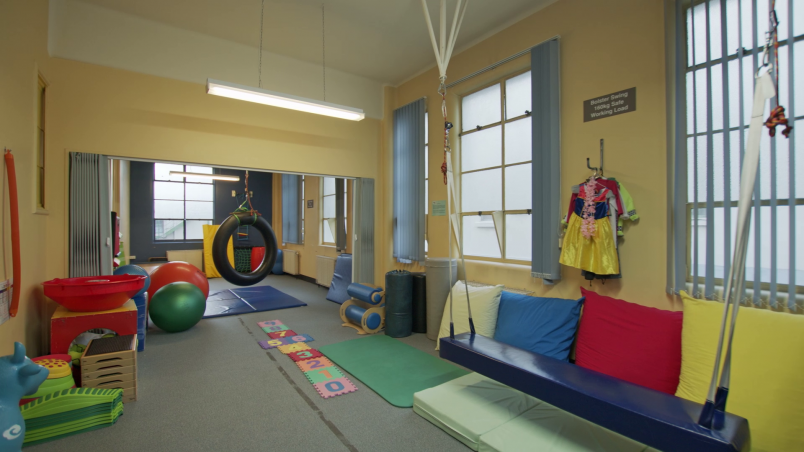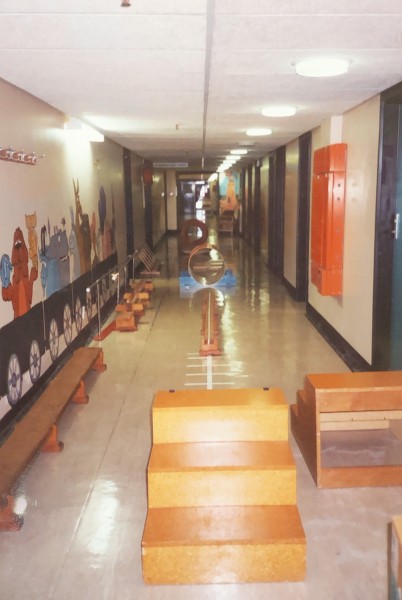Tū mai e moko. Te whakaata o ō mātua. Te moko o ō tīpuna
Stand strong, O moko. The reflection of your parents. The blueprint of your ancestors
The Hayward Clinic - taken from a presentation by Shirley Hudson (Preschool/Developmental Therapist)
"In 1971 Dr Patrician Buckfield (Paediatrician) organised a study which attempted to integrate the physiotherapy treatment of children with physical disabilities (under 3 years of age) with that of the preschool teacher in a play programme.
Concern was felt that although these children's lives were saved, there was really very little help available to the parents in terms of practical ways of helping their children to reach their potential.
There were facilities available to the child from 5 years of age through the Education Department, and from the age of 3 years through the S.I.H Society and the Crippled Children’s Society. A correspondence programme was available in country areas.
At first the emphasis was very much on the physical abnormalities and the integration of physiotherapy into play, but we quickly came to realise that the issues were not as clear cut and that the child’s needs were not physical alone but included intellectual, social and emotional factors and that the parent’s needs were at least as great as their child's.
As the clinic has gone on it has widened in its concept so that now Paediatricians are referring children with developmental delays, children cognitive delays, and children who are in challenging environments.
In working with children and parents at the clinic, we try to have close relationships with other professionals such as Paediatricians, Social Workers, Speech Therapists, Psychologists, District and Plunket Nurses, who may be involved with the family.
Close parent-therapist relationships are needed so that goals can be set for the child mutually. Continuity of the same therapist builds trust and a good working relationship.
One of the most important features of the clinic is to try to present a relaxed and friendly atmosphere where the parent does not feel on trial. No white coats are worn by staff and the play area is bright and informal."
Shared with kind permission, from Mrs Shirley Hudson
The Centre’s first home was in the Physiotherapy Building in a room under the stairs. The Centre staff included a Physiotherapist and an early Childhood Teacher, and a service was provided 2 days per week. When another teacher was required, this role was voluntary until funding was sourced from the Lions. Centre staff spent many evenings talking to groups and spreading the message of what the Centre did.
It then moved into the Old Bowling Green and was named after Miss Vera Hayward in recognition of her many years of work as a Field Worker for the Crippled Children's Society (now CCS Disability Action).
In 1974, The Vera Hayward Clinic for Special Children was opened.
Vera Hayward
Vera Hayward was known for her voluntary work and community service. She was involved in a number of community projects. One of these was fund-raising for textbooks and school uniforms for tamariki attending secondary school who needed them.
She was active on a member of the Mayoress' Patriotic Committee. She wrote 250 letters a month to Otago teachers on overseas service. Every month she would arrange for wives, girlfriends and families to meet and make up parcels, so that each former teacher received at least 2 per year from Dunedin. After each draft of service personal returned home, she would round up the local teachers for a party. Every returning serviceman received a cake.
By 1952 she was the second woman dominion president of the primary school teachers' union, the New Zealand Educational Institute and in 1956 she was awarded an MBE. She had a number of leadership roles both in local Dunedin and national organisations. She was a board member on the Dunedin Hospital Board for 18 years.
She was a primary teacher and first worked as an experimental primary teacher where she supported tamariki with behavioural problems and learning difficulties. Later, she became a Field Worker for the Crippled Children's Society where she dealt with 500 cases around the Otago area.
Hayward Hall, a residential hall for students, is named jointly after her and her brother Jock, who was a University Registrar.
The Vera Hayward Centre for special children was named in her honour in 1974. After her second retirement in 1974, she continued to volunteer to drive tamariki where their whānau had no transport, to the clinic for their appointments.
Patricia Buckfield
Patricia Buckfield was a Paediatrician who worked at Dunedin Hospital in the 1960s and 1970s. Work initiated by Patricia Buckfield and her colleague Donald Malcolm, was instrumental in laying the foundation for the famous Dunedin Multidisciplinary Study.
Originally from England, she emigrated with her parents to New Zealand and trained at the Otago Medical School. She developed an early interest in paediatrics and was a Paediatric Registrar at Auckland Hospital and a Medical Registrar at Dunedin Hospital
Patricia Buckfield undertook postgraduate training at Hammersmith Hospital where she was a Paediatric Registrar from 1965-1967.
She was appointed Lecturer in Paediatrics, Otago University and Paediatrician, Dunedin Hospital in 1967. Here she pioneered the development of neonatal intensive care.
After leaving Dunedin for Wellington in 1982, she became Director of the Puketiro Centre where she worked full time as a developmental Paediatrician.
For more information about the Dunedin Study, visit otago.ac.nz - Dunedin Multidisciplinary Health & Development Research Unit (https://dunedinstudy.otago.ac.nz/studies/assessment-phases).
Murray McGeorge Toy Library
In 1976, Patricia Buckfield (Paediatrician), wrote to Mrs Shirley Hudson, regarding the establishment of a toy library. The library was started in 1978 to provide toys for tamariki attending the Vera Hayward Centre, and was expanded in 1982 to cover all tamariki with special needs throughout Otago. The library was named after Doctor Murray McGeorge, the first Paediatrician at Dunedin Hospital, and was established for tamariki with special needs who lived out of town.
The original letter, shared with kind permission, from Mrs Shirley Hudson
To view a PDF document of the letter, click on the link below:





